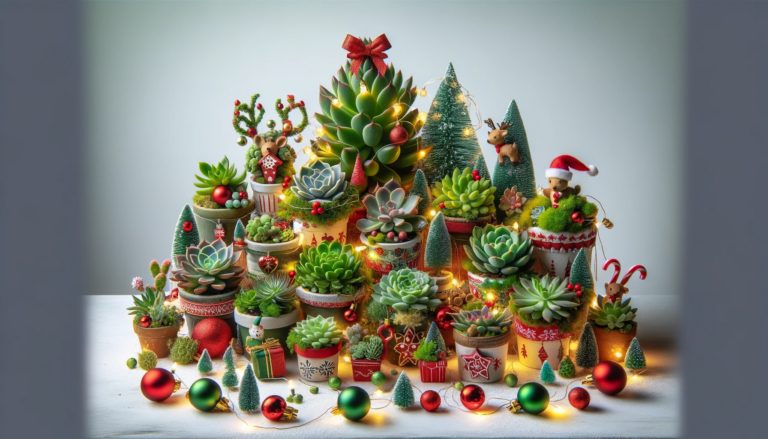Tibouchina Semidecandra: Characteristics and Growing Tips
Overview of Tibouchina Semidecandra
Tibouchina semidecandra is a flowering plant that belongs to the Melastomataceae family. It is a shrub that can grow up to 4 meters in height and is native to Brazil. The plant is commonly known as the “Princess Flower” and is widely cultivated for its beautiful purple flowers.
The genus Tibouchina comprises about 350 species of flowering plants that are mostly native to South America. Tibouchina semidecandra is one of the most popular species in the genus due to its showy flowers and ease of cultivation.
Tibouchina semidecandra is classified under the Plantae kingdom, Angiosperms division, Eudicots class, Rosids subclass, and Myrtales order. It is also a member of the Melastomataceae family, which is known for its diverse range of species and numerous genera.
The plant is a shrub that can grow up to 4 meters in height and has a spread of up to 3 meters. It has oval-shaped leaves that are dark green and glossy, and its flowers are large and showy with a deep purple color.
According to Plants of the World Online by the Royal Botanic Gardens, Kew, Tibouchina semidecandra is widely cultivated as an ornamental plant in tropical and subtropical regions around the world. It is also used in traditional medicine in Brazil for its anti-inflammatory and antioxidant properties.
The systematics of Tibouchina and its allies are still being studied, and there is ongoing debate about the classification of certain species. However, Tibouchina semidecandra is widely accepted as a distinct species and is recognized by the Wikimedia Commons as a valid taxon.
In summary, Tibouchina semidecandra is a popular flowering plant that belongs to the Melastomataceae family and the Tibouchina genus. It is a shrub that can grow up to 4 meters in height and has beautiful purple flowers. It is widely cultivated as an ornamental plant and has some traditional medicinal uses in Brazil.
Growth and Cultivation
Tibouchina semidecandra, also known as princess flower, glory bush, or lasiandra, is an evergreen shrub that can also grow into a small ornamental tree. This plant is native to Brazil and is known for its beautiful purple petals that bloom in the spring and summer. If you want to cultivate this plant, you need to know how to grow it properly.
Soil and Water
Tibouchina semidecandra prefers slightly acidic soil with good drainage. You can create the ideal soil mixture by combining peat moss, sand, and perlite. Make sure to water the plant regularly, especially during the summer months when the weather is hot and dry. However, avoid overwatering as this can lead to root rot.
Light and Shade
This plant thrives in full sun but can also tolerate light shade. If you live in a region with frost, it’s best to plant Tibouchina semidecandra in a container so you can move it indoors during the winter months. If you plant it outdoors, make sure to protect it from frost by covering it with a plastic bag or moving it to a sheltered area.
Planting and Propagating
Tibouchina semidecandra can be propagated from seed or softwood cuttings. If you’re planting from seed, do so in late spring or early summer. If you’re propagating from cuttings, take them in late winter or early spring. Make sure to use a rooting hormone to encourage root growth. Once the plant has rooted, transplant it to a pot or directly into the ground.
Pruning
Tibouchina semidecandra can grow up to 15 feet tall, but you can control its growth by pruning it regularly. Prune the plant in late winter or early spring before new growth appears. Cut back any dead or damaged branches and shape the plant as desired.
Fertilizer
Tibouchina semidecandra is a fertile plant and requires regular fertilization. Apply a balanced fertilizer in late spring and late summer to keep the plant healthy and encourage blooming. Make sure to follow the manufacturer’s instructions for dosage and application.
Overall, Tibouchina semidecandra is a beautiful and easy-to-grow plant that can add a splash of color to your garden or home. With the right soil, water, light, and care, you can enjoy its vibrant purple petals for years to come.
Geographical Distribution and Origin
Tibouchina semidecandra is a species of flowering plant that is native to Brazil. It is also commonly found in other South American countries such as Colombia and French Guiana. The Guianan indigenous name for the plant is “tibouchina” which is where the genus name comes from.
According to the Sunset Western Garden Book, Tibouchina semidecandra is a shrub or small tree that can grow up to 15 feet tall and 10 feet wide. It is known for its vibrant purple flowers that bloom in the summer and fall.
The Flora of French Guiana describes Tibouchina semidecandra as a common plant in the region, found in both primary and secondary forests. The indigenous name for the plant in French Guiana is “bois de violettes”.
While the exact origin of Tibouchina semidecandra is not known, it is believed to have originated in Brazil. The genus Tibouchina is a member of the Melastomataceae family, which is primarily found in tropical regions of the world.
In summary, Tibouchina semidecandra is a South American plant that is commonly found in Brazil, Colombia, and French Guiana. It is known for its vibrant purple flowers and is believed to have originated in Brazil. The indigenous names for the plant include “tibouchina” and “bois de violettes”.
Taxonomy and Classification
Tibouchina semidecandra belongs to the family Melastomataceae, which is a diverse group of tracheophytes that includes approximately 5000 species. The foliage of this species is characterized by simple, alternate leaves that are elliptic or ovate in shape, with serrated margins and prominent veins. The plant produces striking, showy flowers that are arranged in a panicle.
The taxon Pleroma semidecandrum was first described by Cogn. in 1891, based on a specimen collected from Brazil. Later, Tibouchina urvilleana was described by Cogn. in 1885, and it was later found to be narrowly circumscribed. Tibouchina semidecandra was described as a new species by Cong in 2011, based on a specimen collected from Meghalaya, India.
The taxonomy of Tibouchina and its allies has been the subject of much debate and revision. The placement of Tibouchina and many other genera of Melastomataceae has resulted in different generic circumscriptions and taxonomic classifications. The genus Tibouchina was first described by Aubl. in 1775, and it currently includes approximately 350 species.
The anthers of Tibouchina semidecandra are versatile, which means that they can swing freely and are not attached to the filament at a fixed point. This is a characteristic feature of the family Melastomataceae.
In summary, Tibouchina semidecandra is a member of the family Melastomataceae, characterized by simple, alternate leaves and showy flowers arranged in a panicle. The taxonomy of Tibouchina and its allies has been the subject of much debate and revision. The anthers of Tibouchina semidecandra are versatile.
Pests and Diseases
Tibouchina semidecandra is a hardy plant that is relatively pest and disease-resistant. However, like any plant, it is susceptible to certain pests and diseases that can cause damage if left unchecked.
Pests
Common pests that can affect Tibouchina semidecandra include aphids and mealybugs. These insects can cause damage to the leaves and stems of the plant, and can also attract other pests like ants. Regular inspection of the plant for signs of infestation and treatment with insecticidal soap or neem oil can help control these pests.
Diseases
One of the most common diseases that can affect Tibouchina semidecandra is mushroom root-rot. This fungal disease attacks the roots of the plant, causing them to rot and eventually die. Symptoms of mushroom root-rot include yellowing leaves, stunted growth, and wilting. To prevent this disease, it is important to avoid over-watering the plant and to ensure that it is planted in well-draining soil.
Another disease that can affect Tibouchina semidecandra is nematode infestation. Nematodes are small, worm-like organisms that can feed on the roots of the plant, causing stunted growth and yellowing leaves. To prevent nematode infestation, it is important to plant Tibouchina semidecandra in soil that has not previously been infested with nematodes.
Regular inspection of the plant for signs of disease and prompt treatment with appropriate fungicides can help prevent the spread of disease and ensure the continued health of Tibouchina semidecandra.
Recognition and Awards
Tibouchina semidecandra is a beautiful plant that has been recognized for its outstanding qualities. Its purple flowers and spider flower shape have made it a favorite among gardeners and horticulturists alike.
One of the most prestigious awards that Tibouchina semidecandra has received is the Award of Garden Merit from the Royal Horticultural Society. This award is given to plants that have proven to be exceptional in terms of their performance, beauty, and ease of cultivation. Tibouchina semidecandra was awarded this honor due to its stunning flowers and ability to thrive in a variety of growing conditions.
In addition to the Award of Garden Merit, Tibouchina semidecandra has also received recognition from other organizations. For example, it has been featured in various garden shows and exhibitions, where it has been praised for its unique beauty and versatility.
Overall, Tibouchina semidecandra is a plant that has earned its place among the most beloved and respected species in the horticultural world. Its recognition and awards are a testament to its outstanding qualities and the joy that it brings to those who cultivate it.
Related Species
Tibouchina semidecandra belongs to the Melastomataceae family, which includes over 5,000 species of flowering plants. The genus Tibouchina comprises approximately 350 species, which are distributed throughout the Neotropics. Some of the related species to Tibouchina semidecandra are:
- Tibouchina heteromalla: Also known as the Silverleafed Princess Flower, this species is native to Brazil. It has large, velvety leaves with silver undersides and produces pink-purple flowers.
- Pleroma urvilleanum: This species, also called Tibouchina urvilleana, is native to Brazil and is a parent of Tibouchina semidecandra. It produces large, showy purple flowers and is commonly grown as an ornamental plant.
- Pleroma: This genus includes about 60 species of shrubs and small trees that are native to Central and South America. They are commonly known as Princess Flowers and produce large, showy flowers in shades of purple, pink, and white.
Tibouchina semidecandra is closely related to Tibouchina aspera, which is also found in Brazil. Unlike Tibouchina semidecandra, Tibouchina aspera produces a large amount of normal chlorophyll and is not a hybrid species.
The plastid genome of Tibouchina semidecandra has been sequenced and compared to other related species. The analysis revealed that the plastid genome of Tibouchina semidecandra is most similar to that of Tibouchina heteromalla.
In terms of habitat, Tibouchina semidecandra is adapted to dry conditions and can tolerate drought. This is in contrast to some of its related species, such as Tibouchina urvilleana, which prefers moist soils.
Overall, Tibouchina semidecandra is a unique and interesting species that is closely related to several other beautiful Princess Flowers.
Frequently Asked Questions
What are the different varieties of Tibouchina?
Tibouchina plants come in a variety of species, including Tibouchina granulosa, Tibouchina heteromalla, Tibouchina lepidota, Tibouchina multiflora, Tibouchina organensis, Tibouchina pulchra, Tibouchina semidecandra, and Tibouchina urvilleana. Each species has its own unique characteristics, including differences in leaf shape, flower color, and growth habit.
What are common problems with Tibouchina plants?
Tibouchina plants are susceptible to a number of pests and diseases, including root rot, powdery mildew, and spider mites. Overwatering and poor drainage can also lead to problems with these plants. It is important to monitor your Tibouchina regularly for signs of stress or damage, and to take action promptly if any issues arise.
What is the difference between Melastoma and Tibouchina?
Melastoma and Tibouchina are both members of the Melastomataceae family, and are often confused with one another. However, there are some key differences between the two plants. Melastoma plants have round leaves and produce flowers that are typically pink or purple in color, while Tibouchina plants have oval or lance-shaped leaves and produce flowers that can be purple, pink, or white.
What is the common name for Tibouchina?
Tibouchina is commonly known as “glory bush” or “princess flower” due to its striking purple or pink flowers.
How tall can Tibouchina Semidecandra grow?
Tibouchina semidecandra, also known as the “glory tree,” can grow up to 30 feet tall in its native habitat. However, when grown as a houseplant or in a container, it typically reaches a height of 4 to 6 feet.
Do Tibouchina plants prefer sun or shade?
Tibouchina plants prefer full sun to partial shade. They will grow best in a location that receives at least 4 to 6 hours of direct sunlight each day. However, they can also tolerate some shade, particularly in hot climates where they may benefit from some protection from the intense afternoon sun.
Tibouchina plants come in a variety of species, including Tibouchina granulosa, Tibouchina heteromalla, Tibouchina lepidota, Tibouchina multiflora, Tibouchina organensis, Tibouchina pulchra, Tibouchina semidecandra, and Tibouchina urvilleana. Each species has its own unique characteristics, including differences in leaf shape, flower color, and growth habit.
“}},{“@type”:”Question”,”name”:”What are common problems with Tibouchina plants?”,”acceptedAnswer”:{“@type”:”Answer”,”text”:”
Tibouchina plants are susceptible to a number of pests and diseases, including root rot, powdery mildew, and spider mites. Overwatering and poor drainage can also lead to problems with these plants. It is important to monitor your Tibouchina regularly for signs of stress or damage, and to take action promptly if any issues arise.
“}},{“@type”:”Question”,”name”:”What is the difference between Melastoma and Tibouchina?”,”acceptedAnswer”:{“@type”:”Answer”,”text”:”
Melastoma and Tibouchina are both members of the Melastomataceae family, and are often confused with one another. However, there are some key differences between the two plants. Melastoma plants have round leaves and produce flowers that are typically pink or purple in color, while Tibouchina plants have oval or lance-shaped leaves and produce flowers that can be purple, pink, or white.
“}},{“@type”:”Question”,”name”:”What is the common name for Tibouchina?”,”acceptedAnswer”:{“@type”:”Answer”,”text”:”
Tibouchina is commonly known as \”glory bush\” or \”princess flower\” due to its striking purple or pink flowers.
“}},{“@type”:”Question”,”name”:”How tall can Tibouchina Semidecandra grow?”,”acceptedAnswer”:{“@type”:”Answer”,”text”:”
Tibouchina semidecandra, also known as the \”glory tree,\” can grow up to 30 feet tall in its native habitat. However, when grown as a houseplant or in a container, it typically reaches a height of 4 to 6 feet.
“}},{“@type”:”Question”,”name”:”Do Tibouchina plants prefer sun or shade?”,”acceptedAnswer”:{“@type”:”Answer”,”text”:”
Tibouchina plants prefer full sun to partial shade. They will grow best in a location that receives at least 4 to 6 hours of direct sunlight each day. However, they can also tolerate some shade, particularly in hot climates where they may benefit from some protection from the intense afternoon sun.
“}}]}



